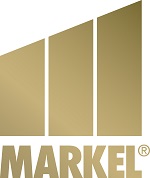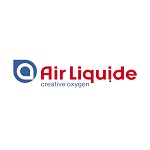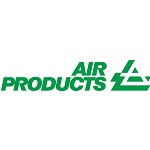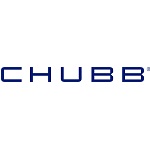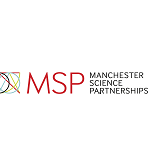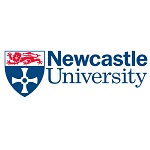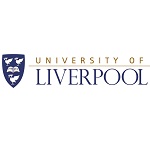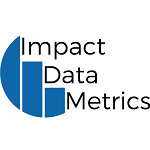What are website sales landing pages, and when should life science businesses use them?

Do you need help turning your healthcare, medical devices, or pharmaceutical website visitors into customers or clients? Are you wondering why your product pages aren’t converting into sales as well as you’d hoped?
In this era of data-driven marketing, you must leverage every aspect of your digital marketing strategy to maximise your return on investment (ROI). This includes crafting a high-converting sales landing page to turn potential customers who click through from a marketing campaign into sales.
But what are sales landing pages, how do they differ from your website product pages, and when should your life science business use them?
A website and a landing page have different purposes. Depending on your goals, one may be more appropriate than the other.
Your life sciences website serves as your organisation’s online presence. It works hard 24/7 to tackle numerous digital needs, from providing detailed information about your brand, products, services, and more to attracting organic traffic and building a complete brand identity and credibility by reassuring visitors that you’re a legitimate and established business.
Your website is critical for getting your product or service in front of potential customers or clients who are yet to discover your business and are searching online for solutions to their needs.
Using a search engine like Google, they land on your website where they can find information about your business, explore your products and services, and, if they have all their needs met, may choose to take one of the many actions available on your site, e.g. subscribe to your newsletter, complete a contact form to find out more, make an online purchase, download a brochure, sign up to a free workshop, etc.
However, visitors arriving on your website may have various reasons for being there at that moment, and many of these may not align with the action you’d like them to take. You may want them to buy a product or contact you about your services. Instead, they may be looking for more information about something specific or interested in your available resources. If your website’s goals don’t match your visitors' goals at that moment, they won’t take the action you desire.
With diverse audiences and varied needs, your website cannot consistently drive the specific conversion you desire for every new visitor.
This is where landing pages come into their own.
What are landing pages?
Landing pages are strategic components of digital marketing campaigns. They are standalone pages, separate from the distractions of your main site. Landing pages are built around a single goal and usually have a single call to action designed to encourage a visitor to take a specific action. There are many different types of landing page, but here are three main categories:
- Splash Landing Page
These are introductory pages, usually seen by visitors before they land on your website. The objective of a splash page is to collect leads in exchange for something like a free downloadable e-book or discount code.
- Lead Capture or Squeeze Landing Page
Like splash pages, they generate leads and capture visitor information such as name, email address, or phone number in exchange for a free offer or resource.
- Sales Landing Page
These focus purely on making sales. Unlike the previous two landing pages, they target leads intent on buying a product or service and customers who have already interacted with your brand in some way.
How does a sales landing page differ from a product page on your website?
A sales landing page and a website product page are both essential components of a marketing strategy, but they serve different functions.
A product page on your website informs potential customers about a specific product or service and persuades them to purchase it. It contains one-size-fits-all descriptions, specifications, and information about the features, allowing a wide range of customers to get all the details they need to evaluate the product before buying. A product page also includes images, pricing, and, depending on your product, customer reviews.
However, the customer journey is far more complex than visiting a website and purchasing. Visitors to your website go through multiple stages of awareness before purchasing and need different information at each step. After exploring other areas of your website, a visitor to your product page may or may not be in the mindset to make a purchase. If not, they still have navigation options (distractions), allowing them to follow links to explore other products and brand information on your website.
A sales landing page offers a standalone and focused digital destination for a marketing campaign—paid advertising, email marketing, LinkedIn campaigns, Google Ads, etc. It allows you to offer a more relevant and personalised experience, target specific pain points, and lead interested customers further down the sales funnel and closer to buying a particular product or service.
The targeted audience that clicks through from a marketing campaign is already interested in your product or service; they intend to buy. A sales landing page offers the messaging they’re expecting, focuses on benefit-oriented copy and impactful design, speaks to their specific pain points, is distraction-free, and is hyper-focused on one desirable action, the call to action that inspired the visitor’s click in the first place.
The lack of distractions combined with their singular focused goal means that sales landing pages can offer your business valuable insights into customer behaviour, allowing you to change and optimise your marketing campaigns.
When should a life sciences business use a sales landing page?
As mentioned above, sales landing pages link digital ads or marketing campaigns and your website or e-commerce site. They are a more conversion-optimised destination than your website for customers who click through from your ads.
Would your business benefit from using sales landing pages?
Answering yes to one or more of the following questions strongly indicates that it would.
- Do you want to increase product sales through your website or e-commerce site?
- Are you promoting specific offers on your products through paid advertising?
- Are you launching a new product line through a marketing campaign?
- Do you want to target a specific segment of your customer base with personalised content and products?
- Do you want to gain greater insight into visitor behaviour so you can optimise your marketing campaigns and increase conversions?
The Takeaway.
At Arttia Creative, we understand what makes a high-converting sales landing page.
Working together, we leverage our years of experience and proven methodologies to create a compelling sales landing page that strategically guides visitors to take the desired action.
Talk to us about your business goals and proposed marketing campaigns.
